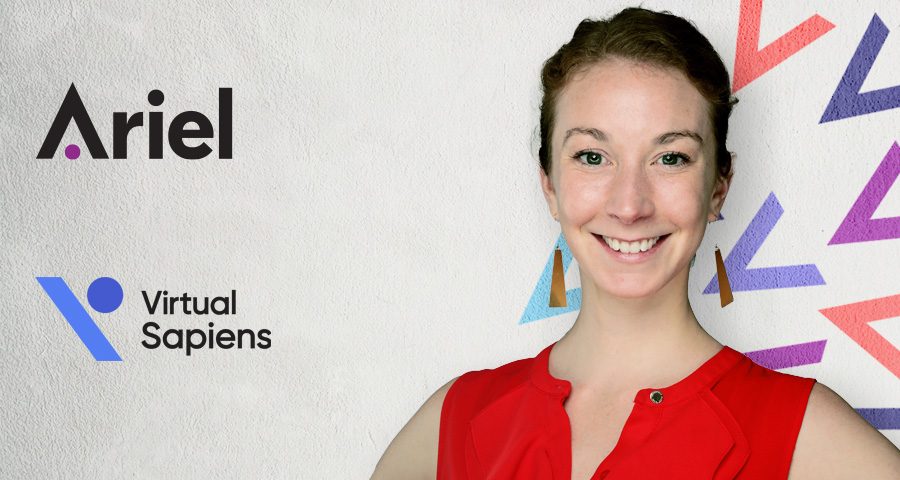Rachel Cossar, the Founder of Virtual Sapiens on the Future of AI in the Learning and Development Industry

What challenges inspired the founding of Virtual Sapiens and more specifically, the Virtual Presence Assessment?
The biggest challenge that inspired the founding of Virtual Sapiens was the rapid and urgent activation of video, a core channel of business communication and impact.
While the pandemic kickstarted Virtual Sapiens, we are now seeing that video has become the primary business model on a global scale.
This means that new awareness and skills must be developed to fluidly move between in-person and virtual. What is so fascinating about this new event, and what underlies the need to leverage technology, scale, and artificial intelligence as part of the solution, is the sheer scale of who is affected by this.
Whether you are selling over video, leading over video, or interviewing over video, your communication skills need to be updated.
What problems does the VPA solve?
Virtual Sapiens responds to this challenge by making personalized feedback and coaching available at scale. Our technology also makes it possible for professionals to get ongoing support and to track progress over time – so that important work done either in private coaching sessions or facilitated workshops can be measured, and can stick.
The Virtual Presence Assessment specifically provides professionals with a succinct snapshot of their virtual presence in about five minutes.
The feedback provided serves as a benchmark which can help track progress in an area that historically has been very challenging to measure.
Importantly, Virtual Sapiens technology is a perfect solution to use to provide a large population of professionals with a baseline of feedback and coaching and to amplify the work of human coaches, who can then spend more of their time getting into more nuanced areas of presence and communication coaching.
What results can professionals expect from taking the assessment?
Immediately following a short video based Q&A, professionals receive a comprehensive breakdown of their virtual presence according to 14 nonverbal communication metrics (think eye gaze, hand gestures, framing etc.). These metrics are contextualized into five main communication categories:
- Framing
- First Impression
- Perceived Trustworthiness
- Authority Impression
- Energy and Expression
The Virtual Presence Assessment portal allows for an unlimited number of assessments as well as dashboards to visually track progress from one assessment to the other. We also provide a learning lab with video content and references to why these metrics matter, how they affect your presence and of course, suggestions for improvement.
How do you see the future of AI evolving in the Learning and Development industry?
AI will only become more and more embedded within the L&D space. While the narrative of leveraging AI can sometimes angle towards distrust, we believe that AI can be used ethically, to unlock massive potential. In essence AI can become the underlying force that amplifies human potential in a more accessible way.
We think we are at the absolute tip of the iceberg when it comes to computer vision in particular. As our devices and supporting technologies become more and more efficient, the use of personalized AI tools to improve our professional impact will only become more seamless and convenient. Thus unlocking a large part of their power.
Could you share 3 quick tips for successful virtual meetings?
- Nailing your setup is crucial.
If your setup is not optimized, you are forcing your audience to waste their mental energy on things like bad lighting, poor framing or distracting backgrounds, when you really want them to be focusing on you and what you are saying! - When you are the active speaker, anchor your eye gaze into the lens.
This helps create a feeling of direct connection between you and your audience. They won’t have to remind themselves that you are probably looking at you wherever you are showing up on their screen. Again, mental energy and focus is limited, help your virtual audience out! - When you are a listener, remember to show people you are listening and engaging with what is being said.
We can often sit immobile on video. This can cause your speaker to wonder if you have frozen, or if what they said was heard. To note, this doesn’t mean you have to agree with them, but slight head movements, shifts in posture and facial expressions can be very helpful as context allows.
About Virtual Sapiens
Virtual Sapiens vision a world fueled by real human connection, on screen, and off. Through their suite of AI solutions, they empower professionals to master communication skills in a virtual world of work. They believe that revealing communication blindspots is essential to enhance communication, confidence, and trust.
